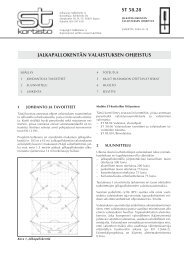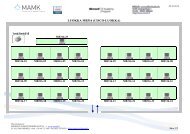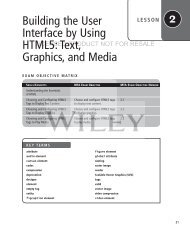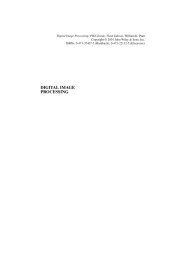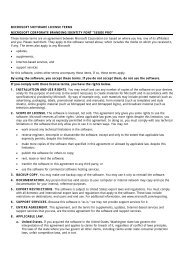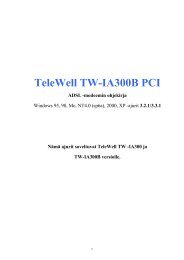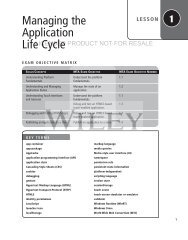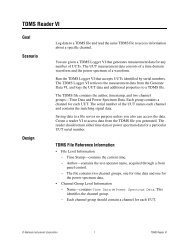Building the User Interface by Using HTML5: Organization ... - server
Building the User Interface by Using HTML5: Organization ... - server
Building the User Interface by Using HTML5: Organization ... - server
Create successful ePaper yourself
Turn your PDF publications into a flip-book with our unique Google optimized e-Paper software.
84 | Lesson 3<br />
unordered lists. Each item in an ordered list is marked <strong>by</strong> a number or letter. An unordered<br />
list is a bulleted list.<br />
• Developers use Web forms as <strong>the</strong> interface for collecting information from Web site and<br />
client application users. HTML input elements serve to build a form’s interface and ensure<br />
that information is collected from users consistently.<br />
• Most Web forms, or at least many fields in most forms, require specifically formatted<br />
input. The new <strong>HTML5</strong> form and input attributes are intuitive, easy to use, and replace a<br />
lot of scripting that was required in HTML 4.01 and previous versions.<br />
• Validation ensures that information entered in an input field of a Web form is in <strong>the</strong> correct<br />
format and usable before sending <strong>the</strong> data to <strong>the</strong> <strong>server</strong>.<br />
• <strong>HTML5</strong> provides new attributes that validate Web form fields as users are entering data<br />
or when <strong>the</strong>y click <strong>the</strong> submit button. The attributes include required, email, and pattern,<br />
among o<strong>the</strong>rs.<br />
LICENSED PRODUCT NOT FOR RESALE<br />
■ Knowledge Assessment<br />
Fill in <strong>the</strong> Blank<br />
Complete <strong>the</strong> following sentences <strong>by</strong> writing <strong>the</strong> correct word or words in <strong>the</strong> blanks provided.<br />
1. An HTML contains rows and columns, and is used to display information<br />
in a grid format.<br />
2. Class and ID are attributes, which means <strong>the</strong>y can be used with any<br />
HTML element.<br />
3. An list orders <strong>the</strong> list entries using numbers, <strong>by</strong> default.<br />
4. An list displays list entries in a bulleted list.<br />
5. The <strong>HTML5</strong> element presents a list (or menu) of commands, usually<br />
with buttons.<br />
6. Form is <strong>the</strong> information a user enters into fields in a Web or client<br />
application.<br />
7. The attribute requires information in a field when <strong>the</strong> form is submitted.<br />
8. text is displayed inside an input field when <strong>the</strong> field is empty. It helps<br />
users understand <strong>the</strong> type of information <strong>the</strong>y should enter or select.<br />
9. is <strong>the</strong> process of verifying that information entered or captured in a<br />
form is in <strong>the</strong> correct format and usable before sending <strong>the</strong> data to <strong>the</strong> <strong>server</strong>.<br />
10. The attribute moves <strong>the</strong> focus to a particular input field when a Web<br />
page loads.<br />
Multiple Choice<br />
Circle <strong>the</strong> letter that corresponds to <strong>the</strong> best answer.<br />
1. Which <strong>HTML5</strong> element defines subdivisions in a document, such as chapters, parts of a<br />
<strong>the</strong>sis, or parts of a Web page whose content is distinct from each o<strong>the</strong>r?<br />
a. aside<br />
b. section<br />
c. header<br />
d. article



